Image Credit: All photos: Marc Rosenbaum
Image Credit: All photos: Marc Rosenbaum This photo shows the side tracks used to mount the Ecosmart window shades. When fully closed, the Ecosmart shade provides complete privacy. The Ecosmart window shade can be opened from the top, providing light while maintaining privacy.
One of the technologies I have tried in my house is an insulating window shade with side tracks. I got four Ecosmart cellular shades from Gordon Clements at Gordon’s Window Decor. One is translucent, and the other three are blackout shades, achieving that by using aluminum foil inside the cells. Because the foil is reflective to radiant heat transfer, these shades have a higher insulating value than the translucent version. They also have two rows of cells, to further increase insulating value (see Image #1 on the right).
The side edges of the shades are slit; a plastic fin that is installed on the sides of the window opening runs in the slit and makes a rudimentary and simple seal. The bottom has a weatherstrip to seal to the window sill. Image #2 (below) is a close-up of the shade and side fin.
Image #3 (below) shows what the shade looks like when it is pulled fully down. Image #4 shows the shade with the top partially down — nice for daylight with some privacy.
They’re not cheap, but they work
So how do they work? Well, they definitely insulate — when opened in the morning a little puff of cold air drops out. And there is condensation on the glass, notably more than the unsealed, single row cellular shades we have elsewhere in the house.
My colleague and friend Andy Shapiro did some careful measuring on one of his and calculates that the effective added R-value is about R-4.
These shades aren’t cheap, although they are a lot less money than a window replacement. If you have leaky windows, these won’t solve that problem — they’re not that airtight. A storm window will do a better job of sealing, but won’t add as much insulating value.
I think that if you are considering shades at all for privacy reasons, and have reasonably tight windows, an insulating shade such as these can make sense, and they handle fairly large windows well. We’ve noticed that the largest one, covering a triple window about 7 feet wide and 5 feet tall, is perhaps a bit too large for the hardware that rolls it up — we help it up with one hand as we retract it in the morning.
Putting the two shades in the living room down definitely makes that room more comfortable to be in, as the two largest windows in the house are on the east and south of that space, and it’s where we spend a lot of time. The change in the radiant temperature is noticeable. So all in all we consider this to be a success as we’ve applied it here.
Marc Rosenbaum is director of engineering at South Mountain Company on the island of Martha’s Vineyard in Massachusetts. He writes a blog called Thriving on Low Carbon. Marc teaches a 10-week online Zero Net Energy Home Design course as part of NESEA’s Building Energy Master Series. You can test drive his class for free.
Weekly Newsletter
Get building science and energy efficiency advice, plus special offers, in your inbox.

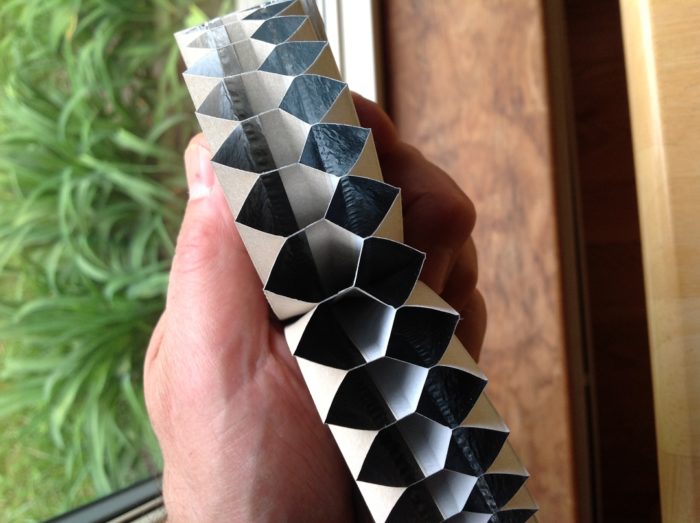




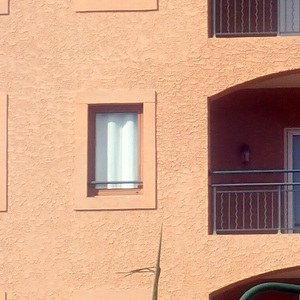
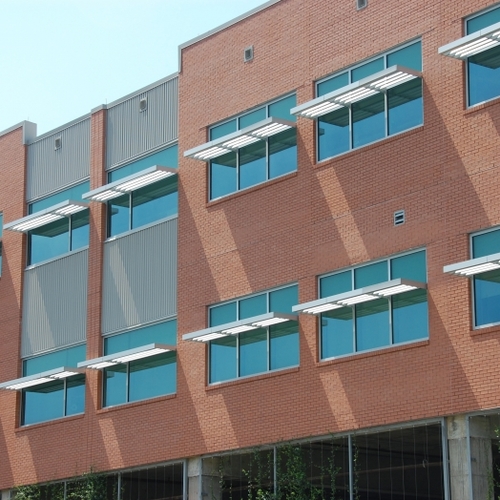
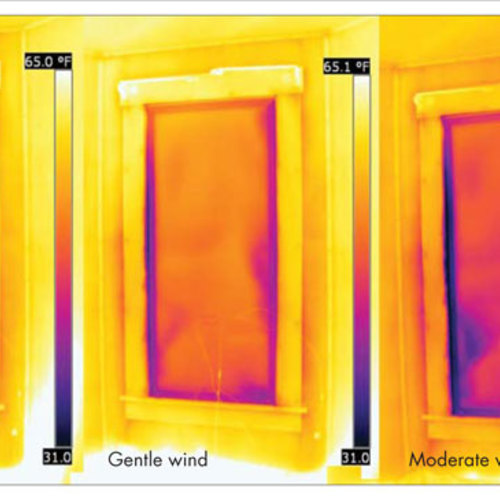
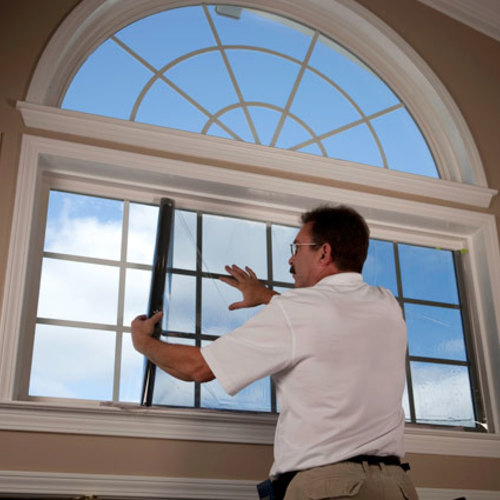






19 Comments
R-Value of windows
Marc,
What is the R-value of the windows you have used in your tests and what are the nightly low temperatures. Typical thermo pane windows in a cold climate may turn to a block of ice with the use of the thermal shades.
Condensation on window surface?
The one place I've seen an insulating shade in operation it led to significant condensation and subsequently horrendous water damage to the interior trim.
There were other factors involved in this case (the windows were of low quality and were failing, which made the problem a lot worse), but I'm curious about other peoples' experience with insulating shades. I'd be terrified to use them in any situation where they would make a big difference (high U-value windows and/or very low exterior temperatures).
I understand using shades to control the radiant transfer as a comfort issue, but with enough airflow around the shade to forestall any condensation issues.
User experience
I live in a second floor apartment in an old house in Burlington, Vermont that was recently weatherized. It has Energy Star double hung wooden windows and is heated with Rinnai direct vent furnaces. With the small apartments (more cooking and showers per unit area), some moisture arriving from the downstairs unit, heaters that don't bring in outside air, and insulated shades, I get condensation on the windows almost all winter nights, even with 24-hour ventilation (~45 cfm). And yes sometimes it's ice instead of droplets. Mine don't have the side seals, and I bet that reduces the condensation though it would make the glass cooler. Downstairs they have the same shades, and I don't know that they ever get condensation, since the moisture seems to accumulate upstairs. In fact in the past (before weatherization and ventilation) the people downstairs were intentionally adding moisture, while the people upstairs were mopping the windows dry every day. I don't think condensation would be a problem for a place with atmospherically vented heat, .
More user experience
Hi,
We use a very similar Symphony Shades product with side tracks -- have had them for several years.
We are satisfied with them.
No moisture problems, but we are in MT and humidity (inside and out) is typically low.
On EXTREME cold mornings there is sometimes a beautiful ice pattern on the windows when you open the shades. It melts/sublimates away in a few minutes with no problems in a few minutes.
Window frames are Vinyl.
Gary
Measurements on and Experience with Cellular Shades
I have two types of cellular shades, light-blocking and light-filtering, all with side seals. I think that there is only one brand that is made with side seals, and I call them Comfortex Comfortrack, but they are also known by Ecosmart and Symphony. I took measurements of the R-value and calculated the values at about 2.0 at 20 degF (outdoor) for the light-blocking shades, and 1.2 at 20 degF for the light-filtering shades, with details provided at http://www.residentialenergylaboratory.com/r_value_cellular_shades.html.
I am in a cool, dry location in Colorado, and use a whole-house humidifier set to 35% RH, but regulated to lower values when the outside temperature drops below about 35 F. The windows are rated at R=3.4 for the low solar gain windows, and R=3.2 for high solar gain. With the shades down, I get a thin film of liquid condensation on the bottom 2" or 3" of the windows when the outside temperature is between 0 and 5 F, and I get a thin frost layer below 0 F, with an indoor temperature around 60 F (night). The condensation or frost disappears after the shades are raised. The condensation can be avoided by raising the bottom of the shade a few inches.
The shades improve the comfort factor when sitting near the windows on a cold night.
These observations for when condensation occurs and where it changes to frost seem to be in rough agreement with how the windows and shades should operate from the physics of water vapor pressure and insulation values.
Condensation
I've not used cellular shades with side tracks, but I have had a number of ordinary cellular shades on windows. I'm in NE Ohio with a whole house humidifie and 50 year old double pane windows. I find I need to leave a space at both the top and the bottom of the shade to keep the condensation from becoming a problem. I would worry that this would be a serious problem with tracks and additional insulation in the shade.
Very Interested
I installed Levolor single-cell room-darkening window shades ($58 ea @ Lowes, custom cut in-store) in our dining room windows (2 - 30x60 vinyl, 2-pane/argon replacement windows; SouthCentral PA; facing East). They made a tremendous difference in room comfort even though they do not have the side "wings" that provide somewhat of a seal. They made such an impression that I recently installed 6 more in our adjacent living room (same-type windows; 2 facing East, 4 facing South - but almost no direct solar gain due to proximity of next door neighbor). Comfort improvement when sitting beside the windows is amazing. Have not yet experienced interior condensation/ice but would only expect that on 2nd floor windows which do not yet have these window treatments (but do have room-darkening vinyl roller blinds). Not as efficient as a quilted/sealed-edge product, but no where near as costly or inconvenient either. Has the added benefit of almost total daylight blackout (for movies, etc.) even without the "wings" since the blinds are fitted against the sashes.
Really looking forward to updates to this blog!
It looks like they run in a
It looks like they run in a channel at the sides to prevent air from
circulating in and out, correct? Are there issues with fitting
those to different types of window trim?
I'd definitely be concerned about condensation too. The hack
shades I made out of Reflectix likely aren't R-4 [but are cheap!]
and they definitely put more water buildup at the bottom corners
on a cold overnight. Those have air gaps but then again that
probably sets up a little convective loop around the whole thing..
_H*
Old Houses in Dry Climates Need Humidifiers
I'm in Denver and tested this years ago. When we used a humidifier, the condensation was bad enough to cause mold on the blinds and window trim.
Without the humidifier, it was OK, just like Gary Reysa's experience.
So I just wouldn't do it if your indoor relative humidity is above about 30% in the winter.
My conclusion was that the best window insulation must be sealed WELL on 4 sides and not allow vapor diffusion through it. A friend in a cold climate has used them successfully, and they are commercially available. Too bad they don't look as cool as cellular shades:
http://www.1windowquilts.com/products/full_broch.htm
Response to Kevin Dickson
Kevin,
You wrote, "Old houses in dry climates need humidifiers." Then you went on to explain that the result of combining a humidifier with window shades was condensation and mold.
My conclusion is the opposite of yours: "Old houses don't need humidifiers." If the air in your house is too dry in the winter, what you need is air sealing work -- not a humidifier.
Response to Ron Keagle
Ron,
You wrote, "I have excellent air sealing, but the air is unbearably dry during the winter." That's unusual.
It's possible that you have a very large house, or a very "dry" lifestyle (with fewer showers, fewer houseplants, and less cooking than the average family). It's also possible that your house is leakier than you think.
Just because you have an HRV, doesn't mean you have to use it. If the air in your house is "unbearably dry," it's very possible that you are overventilating. Turn off the HRV for a few days, and see what happens.
Has you ever tested your home with a blower door?
Indoor humidity
Martin,
It probably is overventilated. The HRV must play a big role in drying the house.
Humidification versus air sealing
Martin,
I can understand why air leaks would cause vapor loss from the heated interior during the winter. But what about the HRV? That is merrily exchanging moist air for drier exterior air continuously.
I have excellent air sealing, but the air is unbearably dry during the winter.
interior storms
we have some interior storm window panels, huge difference, and no condensation issues b/c they seal very well to the existing window frame, even on the zero degree mornings we've had. .
Cellular Shades
Marc,
We live in central Connecticut and have triple layer, translucent cellular shades with no side seals. They are Bali brand purchased at Home Depot. I calculated an R-value of almost 3. Our house originally had double-hung wood windows and storm sash. In 2006 we replaced all the double hung windows with double-hung double-glazed sash kits (2 sash & 2 tracks), wood frames with aluminum cladding outside. We did this in February and left the storm windows in place so we could work comfortably. They are still there, so we have 3 glazing surfaces to help elevate the innermost glass surface temperature.
We installed the Bali 2-pocket shades and are very please with them. In addition to the privacy and filtered light, and radiant blocking advantages others have mentioned, we also like that they eliminate the black hole in the wall at the windows at night, to brighten the room. On the first floor we don't get any condensation with this arrangement. On the second floor we get condensation on north and west windows, but only on the inner surface of the storm windows. I suppose the stack effect makes moist air exfiltrate at these windows. We don't feel the condensation is a serious problem since it is not on the inner windows and the storms have bottom vents. On one north window we have an interior film storm window sealed on 4 sides behind the cellular shades, and we get NO condensation on storm windows there. An auto windshield anti-fog spray on the storm windows has reduced condensation somewhat. South facing 2nd floor windows are much less prone to condensation due to solar gain. To me this indicates that the better the window is, the less the problems with condensation even with cellular shades without side seals.
Compared to Window Quilts?
I think I first learned about Window Quilts here on GBA. Can you compare these cellulars to Window Quilts. Which would be more cost-effective? Thank you.
Add "subscribe to comments" widget
P.S. possible for GBA's webmaster to add a "subscribe to comments" widget, so's we can follow threads? Such engaged readers, I would be subscribing to lots of your posts! Thank you!
Window Quilts - link
Okay, I am answering my own question. Ecosmart makes a comparison here -- http://ecosmartshades.com/windowquilt.html
I'd love to hear the Window Quilts people respond.
side tracks work
I installed the comfort track translucent cellular shades several years ago. Even with temperatures below zero I get no condensation on the windows, probably because the shades are sufficiently air tight at the sides, top and bottom that very little air is circulating between the shades and the windows. Sitting in front of the windows I can feel the difference immediately when the shade is lowered in the evening. I do not know how much money (or firewood) they save me but I know they make the room much more comfortable, with less variation in temperature as I get further from the stove and closer to the windows.
Log in or create an account to post a comment.
Sign up Log in